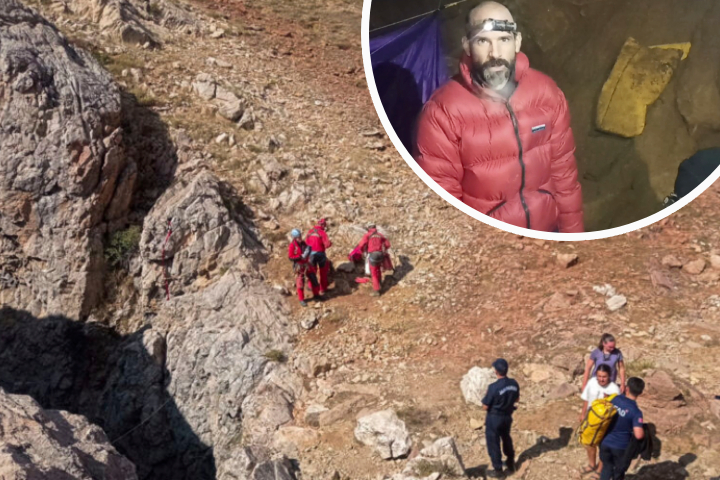


ISTANBUL—Turkish and foreign cave rescue professionals worked together Thursday to reach an American researcher who grew unwell and became stranded within a cave in southern Turkey at a depth of more than 1,000 meters (3,280 feet).
According to the European Cave Rescue Association, Mark Dickey, 40, was in Morca cave in southern Turkey's Taurus Mountains when he developed gastrointestinal bleeding. According to the association's website, he was unable to escape the cave on his own.
Mr. Dickey was characterized as "a highly trained caver and cave rescuer himself" who is widely recognized as a cave researcher, or speleologist, due to his participation in several international trips. He is the secretary of the medical committee of the association.
Mr. Dickey was on an expedition for the Anatolian Speleology Group Association (ASPEG) charting the 1,276-meter (4,186-foot) deep Morca cave system when he was around 1,000 meters down, according to Yusuf Ogrenecek of the Speleological Federation of Turkey.
Later Thursday, Mr. Ogrenecek informed The Associated Press that Mr. Dickey's condition had stabilized and was improving. He stated that the American was in "good spirits" and that physicians will decide whether Mr. Dickey should exit the cave on a stretcher or on his own.
According to the rescue organization, Turkish disaster relief agency AFAD and rescue team UMKE are working with Turkish and foreign cavers on a plan to hoist Mr. Dickey out of the cave system.
Mr. Ogrenecek said that the rescue attempt includes more than 170 people, including physicians, paramedics who are treating Mr. Dickey, and expert cavers, and that it may take two to three weeks. However, depending on the circumstances, it might take less time.
On Thursday night, a team of rescuers from Italy's National Alpine and Speleological Rescue Team will fly to Turkey. Around 50 rescuers will be waiting at the cave's entrance early Friday to take part in the operation organized by Turkish officials.
The cave is being readied for his safe evacuation, according to Marton Kovacs of the Hungarian Cave Rescue Service. Narrow corridors are being enlarged to allow a stretcher, and the risk of falling boulders is being addressed as well.
The rescue teams from Hungary, Bulgaria, Italy, Croatia, and Poland expect to begin the evacuation on Saturday or Sunday. Mr. Kovacs predicted that raising Dickey would take many days, and that various bivouac locations would be set up along the way for Mr. Dickey and the rescue teams to rest.
The cave has been divided into parts, with one area assigned to each country's rescue team.
Mr. Dickey's condition was stabilized by the Hungarian Cave Rescue Service, which was comprised of volunteer rescuers. Mr. Kovacs stated that an extra Hungarian team of 15-20 rescuers will leave Hungary on Thursday evening on a military jet given by the government and arrive at the rescue location on Friday morning.
Six mountain rescuers, including two medics, have gone for Antalya to assist in the rescue mission, according to Jerzy Siodlak, the head of Poland's mountain rescue agency, GOPR, on Radio RMF24 on Wednesday.
According to GOPR officials, thirteen more rescuers from southern Poland are ready to join the rescue effort. Mr. Siodlak added that the operation will be tough due to the American's health and the necessity to maintain him medically fit for the rescue operation under harsh conditions.
He also emphasized the need of providing rescuers with illumination and communication capabilities at the depth the American is at.